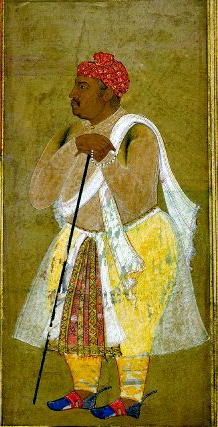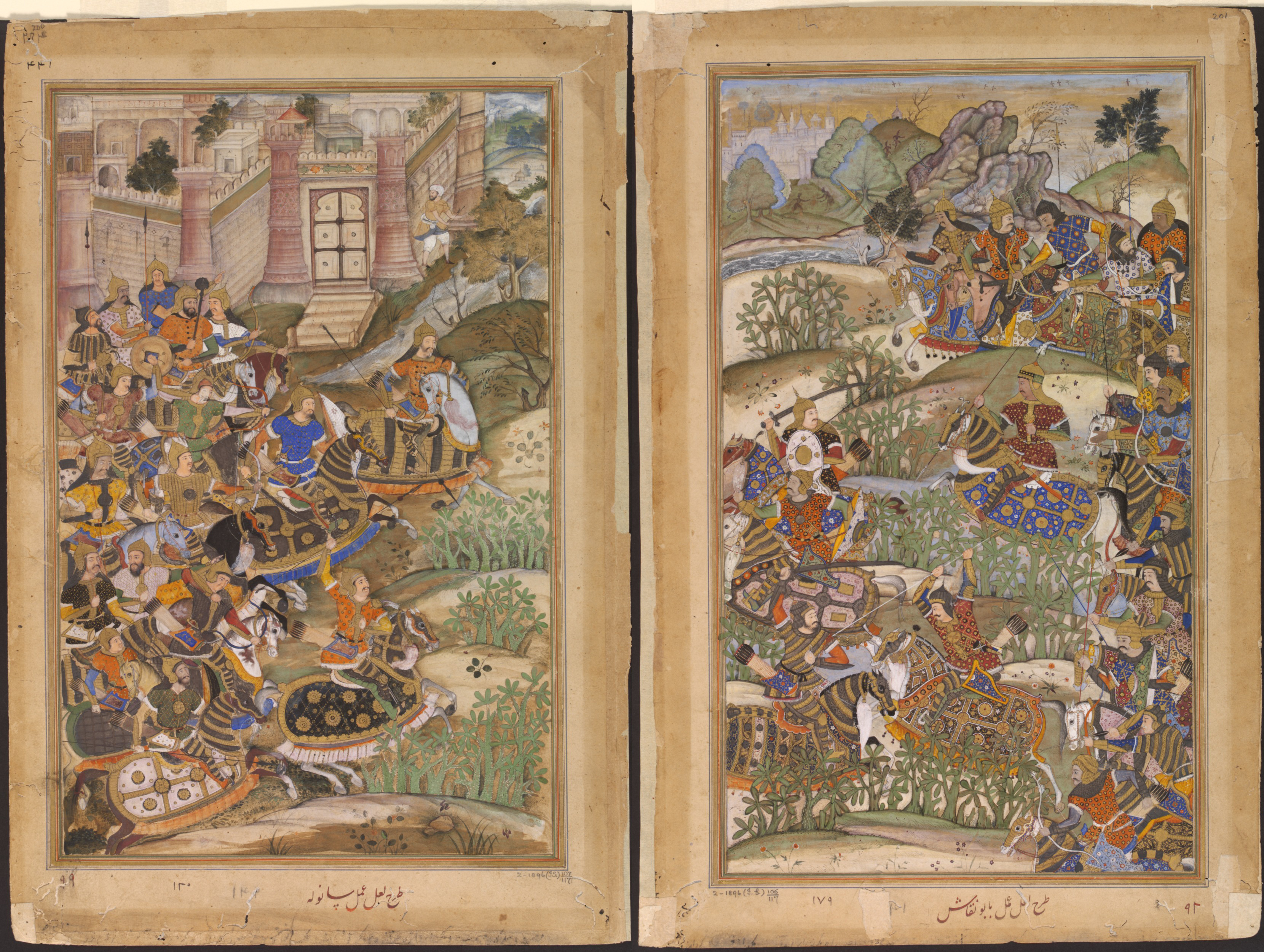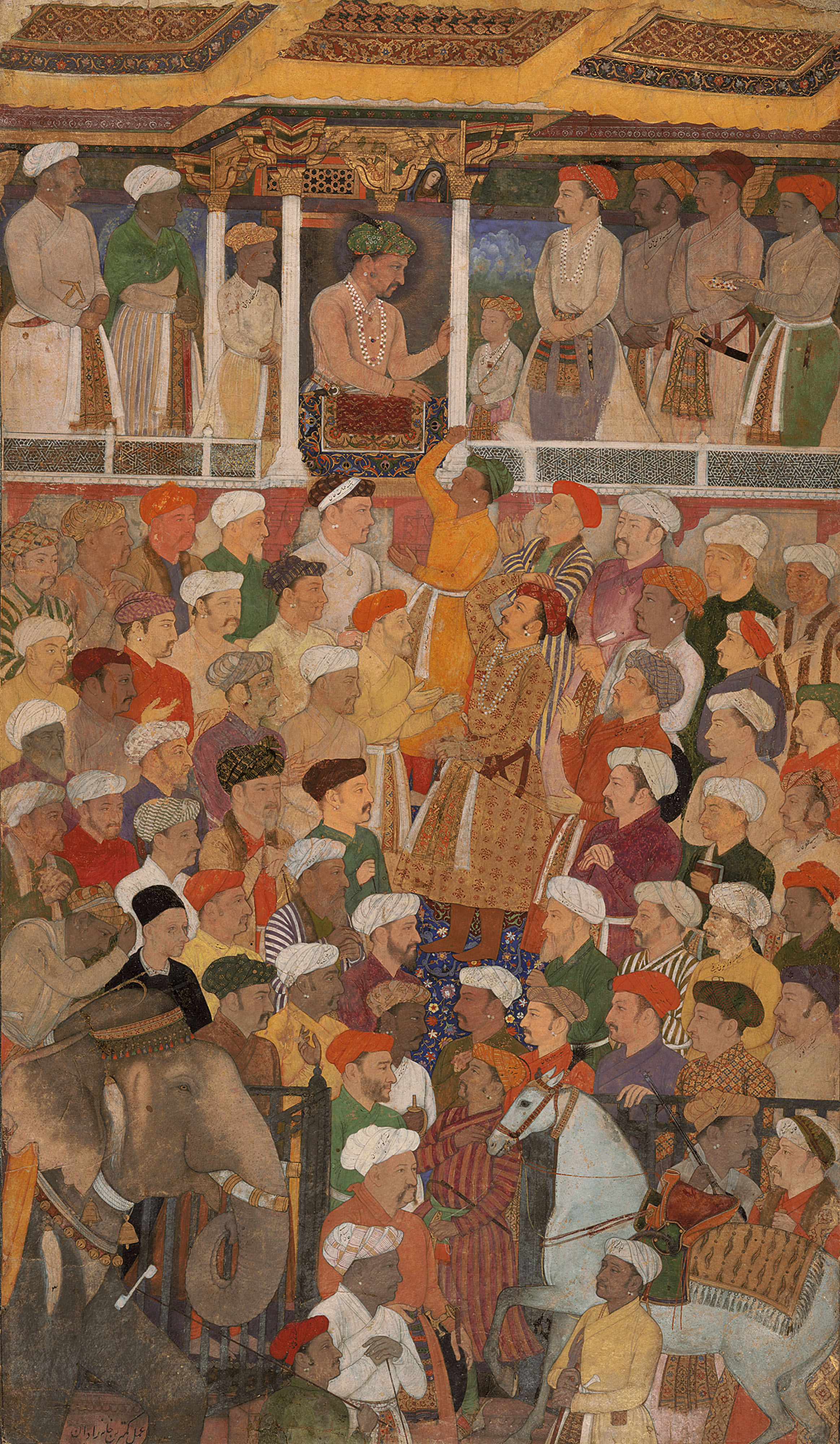|
Khan Jahan Lodi
Pir Khan (died 3 February 1631), known by the name Khan Jahan Lodi, was an ethnic Afghan who served as a noble of the Mughal Empire. Entering the Mughal service during the reign of Mughal emperor Akbar, he enjoyed a meteoric rise under emperor Jahangir, becoming one of the empire's highest ranking nobles. Lodi was the leading example of Afghan recruitment during Jahangir's reign, as Jahangir attempted to conciliate this group that was hitherto hostile to Mughal rule. Khan Jahan Lodi fell out of imperial favour with the accession of Shah Jahan and rebelled against the ruler, resulting in his capture and execution in the early 1630s. His rebellion was a major event of Shah Jahan's early rule. During his lifetime, Khan Jahan Lodi sponsored the ''Tarikh-i-Khan-Jahani'', a written ethno-history of the Afghans which was highly influential on subsequent works about the topic. Origins Khan Jahan Lodi, originally named Pir Khan, was the son of Daulat Khan Lodi, a minor noble during the ... [...More Info...] [...Related Items...] OR: [Wikipedia] [Google] [Baidu] |
Padshahnama
Padshahnama or ''Badshah Nama'' (; ) is a group of works written as the official history of the reign of the Mughal Emperor Shah Jahan I. Unillustrated texts are known as ''Shahjahannama'', with ''Padshahnama'' used for the illustrated manuscript versions. These works are among the major sources of information about Shah Jahan's reign. Lavishly illustrated copies were produced in the imperial workshops, with many Mughal miniatures. Although military campaigns are given the most prominence, the illustrations and paintings in the manuscripts of these works illuminate life in the imperial court, depicting weddings and other activities. The most significant work of this genre was written by Abdul Hamid Lahori, the pupil of Akbar's biographer Abdul Fazal, in two volumes. He could not write the third volume of this genre because of the infirmities of old age. Majumdar, R. C. (ed.) (2007). ''The Mughul Empire'', Mumbai: Bharatiya Vidya Bhavan, , p.9 History Shah Jahan in his eig ... [...More Info...] [...Related Items...] OR: [Wikipedia] [Google] [Baidu] |
Roh (historical Region)
Roh was a historical region spanning present-day Pakistan and Afghanistan, recognising as the original homeland of the Rohilla community. The name Rohilkhand, a historian region in India, is derived from this community. Notably, several dynasties of India, including the Lodi dynasty, Sur dynasty and Karrani dynasty The Karrani dynasty (, ) was founded in 1564 by Taj Khan Karrani, an ethnic Afghan from the Karlani tribe, hailing from Bangash district. It was the last dynasty to rule the Sultanate of Bengal, before the region became a Subah of the Mugha ..., trace their origins back to Roh, highlighting its importance in the region's historical narrative. References {{coord missing, Afghanistan, Pakistan Rohilla Historical regions of Pakistan Historical regions of Afghanistan ... [...More Info...] [...Related Items...] OR: [Wikipedia] [Google] [Baidu] |
Raja Man Singh
Mirza Raja Man Singh I (21 December 1550 – 6 July 1614) was the 24th Raja, Kachawaha Rajput ruler of the Kingdom of Amber from 1589 to 1614. He also served as the foremost imperial Subahdar of Bihar Subah from 1587 to 1594, then for Bengal Subah for three terms from 1595 to 1606 and the Subahdar of Kabul Subah from 1585 to 1586. He served in the imperial Mughal Army under Emperor Akbar. Man Singh fought sixty-seven important battles in Kabul, Balkh, Bukhara, Bengal and Central and Southern India. He was well versed in the battle tactics of both the Rajputs as well as the Mughals. He is commonly considered to be one of the Navaratnas, or the nine (''nava'') gems (''ratna'') of the royal court of Akbar. Early life of Man Singh I He was the son of Raja Bhagwant Das and his wife Bhagawati of Amer. He was born on Sunday, 21 December 1550. Initially known as ''Kunwar'' (prince), Man Singh received the title of ''Mirza (noble), Mirza'' or ''Raja'' (King) and the rank ''Mansab ... [...More Info...] [...Related Items...] OR: [Wikipedia] [Google] [Baidu] |
Mughal Conquest Of Gujarat
The last two Gujarat Sultans, Ahmad Shah III and Mahmud Shah III, were raised to throne when they were young so the nobles were ruling the Sultanate. The nobles divided territories between themselves but soon started fighting between themselves for supremacy. One noble invited the Mughal emperor Akbar to intervene in 1572 which resulted in the conquest of Gujarat by 1573 and Gujarat becoming the province of the Mughal Empire. Background After establishing his supremacy in northern India, Akbar turned his attention toward extending his realm to the coastal regions. With Malwa secured and Rajasthan subdued, the path to Gujarat was now open. At that time, Gujarat was in a state of disorder under the weak rule of Muzaffar Shah III, a mere figurehead whose ambitious nobles had carved the kingdom into feuding parts. The region’s rich soil, busy ports, and lucrative foreign trade made it highly attractive, while its location along the pilgrimage route to Mecca and Medina added signi ... [...More Info...] [...Related Items...] OR: [Wikipedia] [Google] [Baidu] |
Daniyal Mirza
Daniyal Mirza (11 September 1572 – 19 March 1605) was a prince of the Mughal Empire who served as the Viceroy of the Deccan. He was the third son of the emperor Akbar and a half-brother of the emperor Jahangir. Daniyal was Akbar's favourite son, as well as an able general. Like his father, he had fine taste in poetry and was an accomplished poet himself, writing in Hindi and Persian. He died from problems relating to alcoholism at the age of thirty-two, predeceasing Akbar by seven months. Early life The youngest of Akbar's three sons, Daniyal Mirza was born on 11 September 1572. The birth took place in the house of Shaikh Daniyal of Ajmer, a holy man whose blessings Akbar had sought and for whom the prince was subsequently named. The emperor, at the time embarking on an expedition to Gujarat, sent the infant Daniyal to be cared for by the queen of Raja Bharmal of Amber. When Akbar reached Sirohi on his return from Gujarat, he ordered that Madho Singh, son of Bhagwant Das, ... [...More Info...] [...Related Items...] OR: [Wikipedia] [Google] [Baidu] |
Abdul Rahim Khan-i-Khanan
Khanzada Mirza Khan Abdul Rahim (17 December 1556 – 1 October 1627), popularly known as simply Rahim and titled ''Khan-i-Khanan'', was a poet who lived in India during the rule of Mughal emperor Akbar, who was Rahim's mentor. He was one of the nine important ministers (dewan) in Akbar's court, known as the Navaratnas. Rahim was known for his Hindustani dohe (couplets) and his books on astrology. Biography Abdul Rahim was born in Delhi,29. Kha´n Kha´na´n Mi´rza´ 'Abdurrahi´m, son of Bairám Khán – Biography of Abul Fazl, Vol I, English Translation. 1873. the son of |
Deccan
The Deccan is a plateau extending over an area of and occupies the majority of the Indian peninsula. It stretches from the Satpura and Vindhya Ranges in the north to the northern fringes of Tamil Nadu in the south. It is bound by the mountain ranges of the Western Ghats and the Eastern Ghats on the sides, which separate the region from the Western and Eastern Coastal Plains respectively. It covers most of the Indian States of Maharashtra, Karnataka, Telangana and Andhra Pradesh excluding the coastal regions, and minor portions of Tamil Nadu and Kerala. The plateau is marked by rocky terrain with an average elevation of about . It is subdivided into Maharashtra Plateau, Karnataka Plateau, and Rayalaseema & Telangana Plateau. The Deccan Traps in the north west were formed by multiple layers of igneous rocks laid down by basaltic lava flows following a massive volcanic eruption that occurred during the end of the Cretaceous period (66 mya). The underlying bed consists of g ... [...More Info...] [...Related Items...] OR: [Wikipedia] [Google] [Baidu] |
Babur
Babur (; 14 February 148326 December 1530; born Zahīr ud-Dīn Muhammad) was the founder of the Mughal Empire in the Indian subcontinent. He was a descendant of Timur and Genghis Khan through his father and mother respectively. He was also given the posthumous name of ''Firdaws Makani'' ('Dwelling in Paradise'). Born in Andijan in the Fergana Valley (now in Uzbekistan), Babur was the eldest son of Umar Shaikh Mirza II (1456–1494, Timurid governor of Fergana from 1469 to 1494) and a great-great-great-grandson of Timur (1336–1405). Babur ascended the throne of Fergana in its capital Akhsikath in 1494 at the age of twelve and faced rebellion. He conquered Samarkand two years later, only to lose Fergana soon after. In his attempt to reconquer Fergana, he lost control of Samarkand. In 1501, his attempt to recapture both the regions failed when the Uzbek prince Muhammad Shaybani defeated him and founded the Khanate of Bukhara. In 1504, he conquered Kabul, which was un ... [...More Info...] [...Related Items...] OR: [Wikipedia] [Google] [Baidu] |
Lahore
Lahore ( ; ; ) is the capital and largest city of the Administrative units of Pakistan, Pakistani province of Punjab, Pakistan, Punjab. It is the List of cities in Pakistan by population, second-largest city in Pakistan, after Karachi, and 27th List of largest cities, largest in the world, with a population of over 14 million. Lahore is one of Pakistan's major industrial, educational and economic hubs. It has been the historic capital and cultural center of the wider Punjab region, and is one of Pakistan's most Social liberalism, socially liberal, Progressivism, progressive, and Cosmopolitanism, cosmopolitan cities. Origins of Lahore, Lahore's origin dates back to antiquity. The city has been inhabited for around two millennia, although it rose to prominence in the late 10th century with the establishment of the Walled City of Lahore, Walled City, its fortified interior. Lahore served as the capital of several empires during the medieval era, including the Hindu Shahis, Gha ... [...More Info...] [...Related Items...] OR: [Wikipedia] [Google] [Baidu] |
Daulat Khan Lodi
Daulat Khan Lodi ( Persian: دولت خان لودی) was the governor of Lahore during the reign of Sikandar Khan and Ibrahim Lodi, the last rulers of the Lodi dynasty. Due to disaffection with Ibrahim, Daulat invited Babur to invade the empire. He was initially governor of the Jalandhar Doab before being promoted to the governorship of Lahore between 1500 and 1504, and remained so until Babur's invasion in 1524. He was the son of Tatar Khan, the previous Nizam of Lahore, who had asserted his independence from Lodi dynasty under Bahlul Khan Lodi, father of Sikandar Khan Lodi. Daulat Khan was loyal to the dynasty but betrayed Ibrahim Lodhi due to his rigid, proud and suspicious nature. Aid of Babur In 1523, Ibrahim Lodi, Daulat Khan's sovereign, was locked in a power struggle with his relatives and ministers. Daulat Khan was one of Ibrahim's chief opponents, along with the ruler's own uncle, Alam Khan (also known as Ala-ud-din), who at that time was living under the protecti ... [...More Info...] [...Related Items...] OR: [Wikipedia] [Google] [Baidu] |
Tuzk-e-Jahangiri
''Tuzk-e-Jahangiri'' () or ''Jahangirnama'' () is the autobiography of Mughal Emperor Jahangir (1569–1627). The ''Tuzk-e-Jahangiri'' is written in Persian, and follows the tradition of his great-grandfather, Babur (1487–1530), who had written the ''Baburnama''; though Jahangir went a step further and besides writing on the history of his reign, he included details such as his reflections on art, politics, and information about his family. He wrote the memoirs in stages through most of his life until 1622. His own manuscript was magnificently illustrated by his studio of painters, but the illustrations were very early dispersed, many being found in ''muraqqa'' (albums) compiled by his sons. Several are in the British Library. Overview The text details the first 19 years of his reign (from 1605–1623), but he gave up the writing of his memoirs in 1621. The complete ''Tuzuk-e-Jahangiri'' written by Jahangir himself is housed in the National Museum of India since the 1950s. ... [...More Info...] [...Related Items...] OR: [Wikipedia] [Google] [Baidu] |
Lodi Dynasty
The Lodi dynasty was an Afghan royal family that ruled Sultanate of Delhi from 1451 to 1526. It was the fifth and final dynasty of the Delhi Sultanate, and was founded by Bahlul Lodi when he replaced the Sayyid dynasty. Bahlul Lodi Following the reign of the Sayyids, the Afghan or Turco-Afghan Lodi dynasty gained the sultanate. Bahlul Khan Lodi () was the nephew and son-in-law of Malik Sultan Shah Lodi, the governor of Sirhind in (Punjab), India and succeeded him as the governor of Sirhind during the reign of Sayyid dynasty ruler Muhammad Shah. Muhammad Shah raised him to the status of a Tarun-Bin-Sultan. He was the most powerful of the Punjab chiefs and a vigorous leader, holding together a loose confederacy of Afghan and Turkish chiefs with his strong personality. He reduced the turbulent chiefs of the provinces to submission and infused some vigour into the government. After the last Sayyid ruler of Delhi, Alauddin Alam Shah voluntarily abdicated in favour of him, Ba ... [...More Info...] [...Related Items...] OR: [Wikipedia] [Google] [Baidu] |







